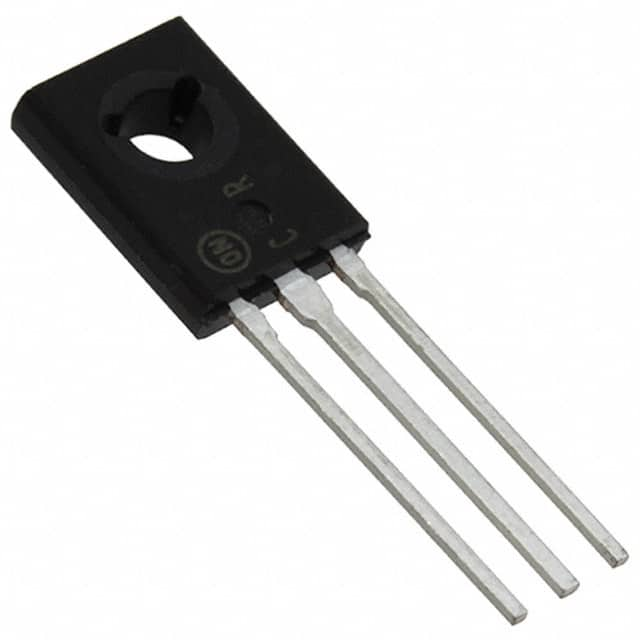BD435 Transistor: Encyclopedia Entry
Introduction
The BD435 transistor is a crucial component in electronic circuits, belonging to the category of power transistors. This entry provides an overview of the BD435 transistor, including its basic information, specifications, pin configuration, functional features, advantages and disadvantages, working principles, application field plans, and alternative models.
Basic Information Overview
- Category: Power Transistor
- Use: Amplification and switching applications
- Characteristics: High current and voltage ratings, low saturation voltage
- Package: TO-126
- Essence: NPN silicon epitaxial-base planar type transistor
- Packaging/Quantity: Typically available in packs of 10 or 25 units
Specifications
- Collector-Emitter Voltage (VCEO): 45V
- Collector-Base Voltage (VCBO): 45V
- Emitter-Base Voltage (VEBO): 5V
- Collector Current (IC): 4A
- Power Dissipation (PD): 36W
- Transition Frequency (FT): 2MHz
- Operating Temperature Range: -65°C to 150°C
Detailed Pin Configuration
The BD435 transistor has three pins: 1. Collector (C) 2. Base (B) 3. Emitter (E)
Functional Features
- High current gain
- Low saturation voltage
- Fast switching speed
- Good linearity in amplification applications
Advantages and Disadvantages
Advantages
- Suitable for high-power applications
- Robust construction
- Wide operating temperature range
Disadvantages
- Relatively larger package size
- Limited frequency response compared to smaller signal transistors
Working Principles
The BD435 operates based on the principles of bipolar junction transistors (BJTs), where the flow of current between the collector and emitter is controlled by the base current. It amplifies or switches electronic signals in various circuit configurations.
Detailed Application Field Plans
The BD435 transistor finds extensive use in the following applications: - Audio amplifiers - Power supply circuits - Motor control circuits - LED drivers - Voltage regulators
Detailed and Complete Alternative Models
Some alternative models to the BD435 transistor include: - TIP31C - 2N3055 - MJ2955 - MJE13005
In conclusion, the BD435 transistor serves as a reliable and versatile component in electronic circuits, offering high current and voltage ratings along with fast switching characteristics. Its robust design and wide application field make it a popular choice for various electronic projects.
Word Count: 315
Lista 10 Vanliga frågor och svar relaterade till tillämpningen av BD435 i tekniska lösningar
What is BD435?
- BD435 is a PNP silicon power transistor used in various electronic applications.
What are the typical applications of BD435?
- BD435 is commonly used in audio amplifiers, voltage regulators, and power management circuits.
What is the maximum collector current for BD435?
- The maximum collector current for BD435 is 4A.
What is the maximum collector-emitter voltage for BD435?
- The maximum collector-emitter voltage for BD435 is 45V.
What is the power dissipation of BD435?
- The power dissipation of BD435 is 40W.
What are the key features of BD435?
- BD435 features high current capability, low saturation voltage, and high transition frequency.
Can BD435 be used in switching applications?
- Yes, BD435 can be used in low-frequency switching applications.
What is the typical hFE (DC current gain) of BD435?
- The typical hFE of BD435 is 40 to 160.
Is BD435 suitable for use in automotive electronics?
- Yes, BD435 is suitable for use in automotive electronic systems such as audio amplifiers and voltage regulators.
Where can I find the detailed datasheet for BD435?
- The detailed datasheet for BD435 can be found on the manufacturer's website or through authorized distributors.


